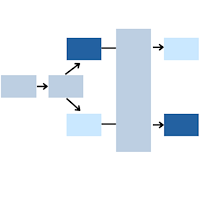Previous Posts
In this Stat’s Amore Training, Marc Diener will help you make sense of the strange terms and symbols that you find in studies that use multilevel modeling (MLM). You’ll learn about the basic ideas behind MLM, different MLM models, and a close look at one particular model, known as the random intercept model. A running […]
One of the many decisions you have to make when model building is which form each predictor variable should take. One specific version of this decision is whether to combine categories of a categorical predictor. The greater the number of parameter estimates in a model the greater the number of observations that are needed to […]
Learning how to analyze data can be frustrating at times. Why do statistical software companies have to add to our confusion? I do not have a good answer to that question. What I will do is show examples. In upcoming blog posts, I will explain what each output means and how they are used in […]
Our analysis of linear regression focuses on parameter estimates, z-scores, p-values and confidence levels. Rarely in regression do we see a discussion of the estimates and F statistics given in the ANOVA table above the coefficients and p-values. And yet, they tell you a lot about your model and your data. Understanding the parts of […]
What is a Confidence Interval? Any sample-based findings used to generalize a population are subject to sampling error. In other words, sample statistics won’t exactly match the population parameters they estimate.
Odds is confusing in a different way than some of the other terms in this series. First, it’s a bit of an abstract concept, which I’ll explain below. But beyond that, it’s confusing because it is used in everyday English as a synonym for probability, but it’s actually a distinct technical term. I found this […]
Good graphs are extremely powerful tools for communicating quantitative information clearly and accurately. Unfortunately, many of the graphs we see today confuse, mislead, or deceive the reader. These poor graphs result from two key limitations. One is a graph designer who isn’t familiar with the principles of effective graphs. The other is software with a […]
Multicollinearity is one of those terms in statistics that is often defined in one of two ways: 1. Very mathematical terms that make no sense — I mean, what is a linear combination anyway? 2. Completely oversimplified in order to avoid the mathematical terms — it’s a high correlation, right? So what is it really? […]
I’ve written about this before–there is just something about statistics that makes people feel…well, not so smart. This makes people v-e-r-y reluctant to ask questions. This fact really struck me years and years ago. Hit me hard.
How do you know your variables are measuring what you think they are? And how do you know they’re doing it well? A key part of answering these questions is establishing reliability and validity of the measurements that you use in your research study. But the process of establishing reliability and validity is confusing. There […]


 stat skill-building compass
stat skill-building compass